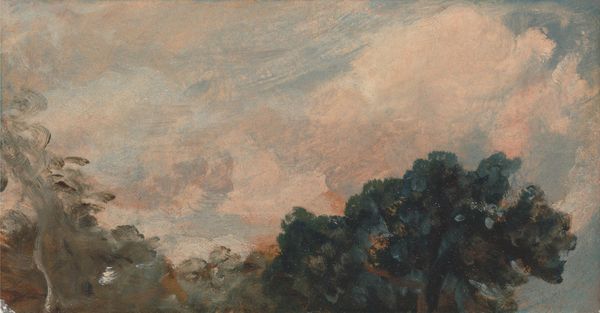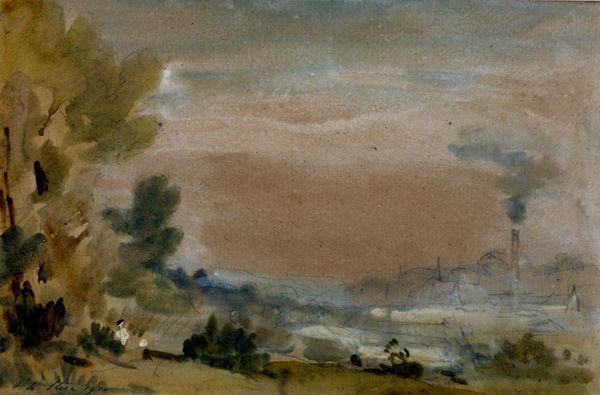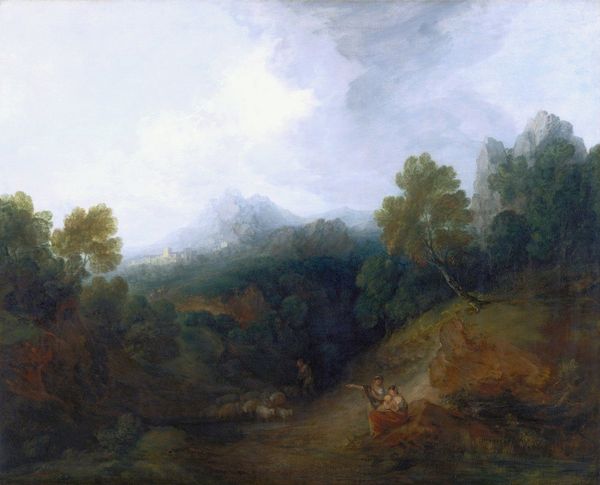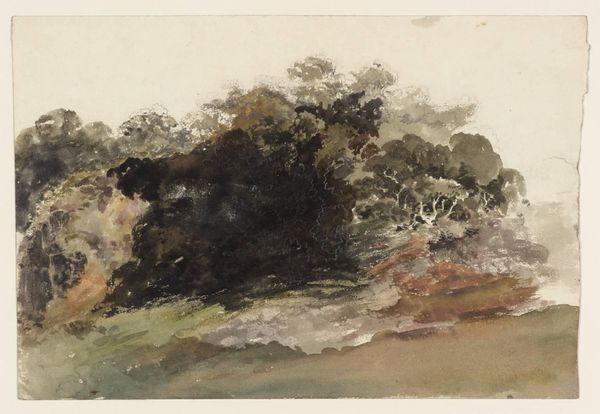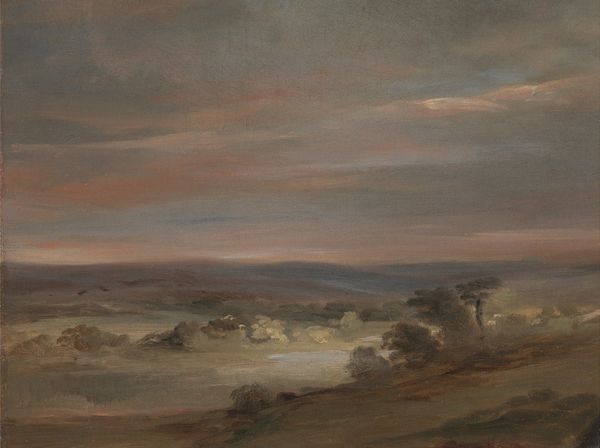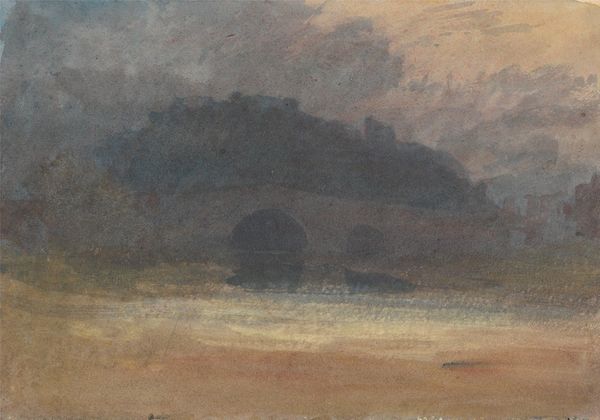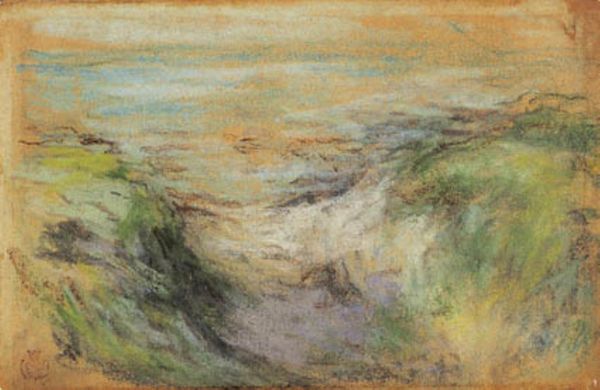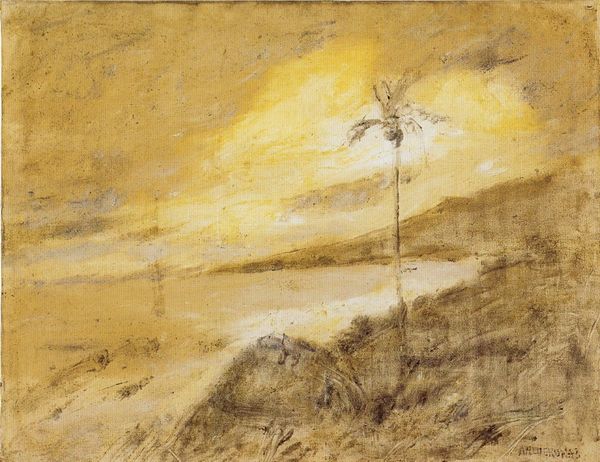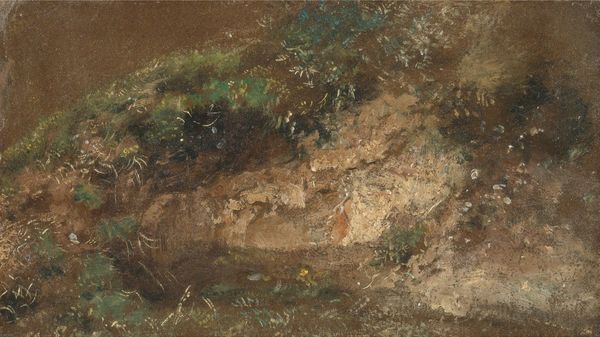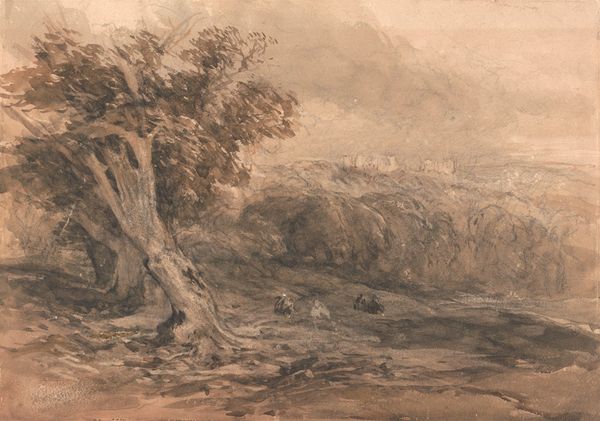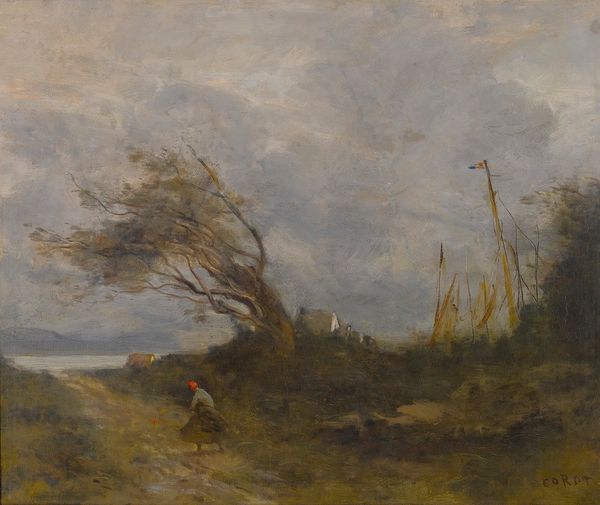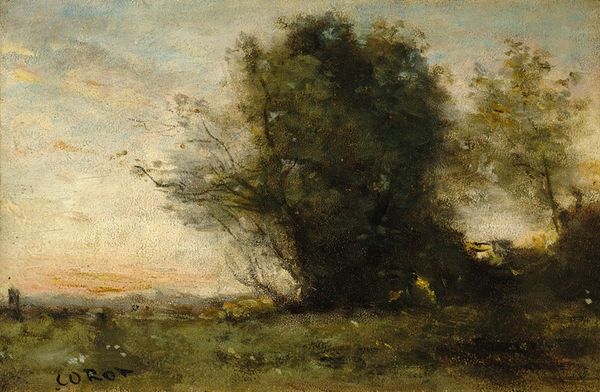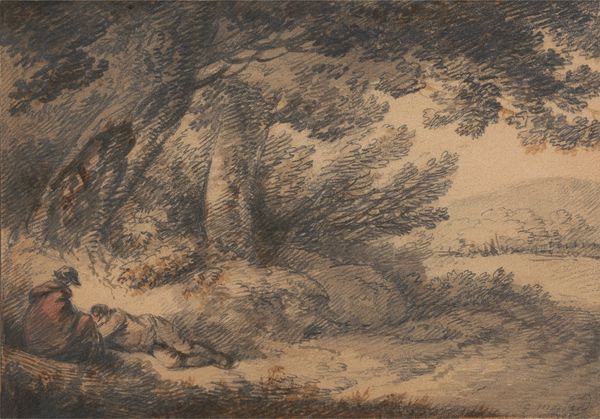
Copyright: Public Domain: Artvee
Editor: Here we have James Ensor's "Landscape with Waterfall," painted in 1875, rendered in watercolor. The scene is rather serene, almost melancholic. I’m struck by how muted the colors are. What do you see in this piece, especially considering Ensor's later, more avant-garde work? Curator: It’s tempting to see this as an early exploration of Romantic ideals, landscape as sublime experience, and therefore intimately linked to political thought of the time. Note the lone figure beside the waterfall; what commentary does that make? Plein-air painting was, during this period, linked with new political ideas concerning nature, individuality, and national identity. Editor: So, the act of painting outdoors, of observing nature, was itself a kind of political statement? Curator: Precisely! Artists engaged with the landscape weren’t just capturing pretty scenes. They were often reflecting ideas about ownership, access, and the very soul of a nation. How did one access nature, who was shut out? These questions fueled creative landscapes. And this waterfall could be read as more than just scenery; as symbolic. Editor: In what way symbolic? Curator: Waterfalls can represent power, change, the untamed aspects of the natural world. It's interesting to consider this image within the context of broader artistic and intellectual movements, when we usually think of Ensor's grotesque, late period paintings. How do you see this fitting with those other pieces, if at all? Editor: I suppose it shows that even artists known for radical departures can have roots in more traditional artistic practices. It helps me think of artists’ careers as not as linear as they’re presented. Curator: Exactly! And hopefully gives you insight to question narratives!
Comments
No comments
Be the first to comment and join the conversation on the ultimate creative platform.
